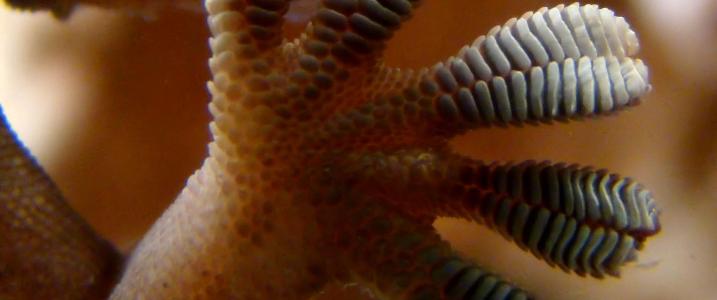Enter the humble gecko. If you’ve ever lived or stayed in parts of the mediterranean then you’re probably used to seeing these cute little reptiles running up and down walls. In fact in many cultures having a gecko in your house is considered to be good luck and whether or not it has any supernatural benefits a gecko will keep your house free of insect pests. So why have I suddenly taken an interest in reptiles? This is a technology blog isn’t it? Yes it is and over the last few years an interesting new field of research has increasingly gained ground.
Bio-mimetics is the study of natural systems, models and elements of nature for the purpose of solving complex human problems. Although a relatively new recognised field of science, people have been looking at nature for millennia and wondering how animals achieve some of the amazing feats they do. Leonardo da Vinci made hundreds of sketches of the anatomy and flight of birds in his quest to build a working flying machine. More recently the Eastgate Centre in Harare, Zimbabwe was designed after architects had first looked at the internal workings of a Termite mound asking themselves the question “How does a termite mound maintain such a perfect and consistent internal temperature.” They discovered that it was due to the termites constantly opening and closing vents in the sides of the structure ensuring a consistent airflow. The Eastgate centre mimics this action and as a result uses about 10% of the energy of a normal building of its size. Bio-mimetics can be very profitable!
So why the gecko? Well the gecko has the amazing ability to stick vertically or even upside down on surfaces. How does it manage this amazing feet (pun absolutely intended)? Autumn, et al, in a article published in the Proceedings of the National Academy of Science (2002) finally elucidated the mechanism that has been puzzling the casual observer for centuries. Gecko’s feet are covered in literally millions of tiny little “hairs” called setae. These effectively give Gecko feet a very high surface area and these setae do something very cool indeed, they interact with surfaces at an atomic level! To put this into plain english, there is a weak inter-molecular force called a van der waal force after Johannes Diderik van der Waals, the Dutch man that discovered it. Simply put the van der waals force is a weak atomic force representing the difference in attractive or repulsive forces between molecules. Gecko setae use van der waals force to create an attractive force overall between themselves and the surface that they want to stick to. Clever little suckers huh?
Now one of Leonardo’s fellow countrymen, Nicola Pugno, working in the university of Trento has proposed that we could create a “Spider Man” like suit that could enable construction workers, or building cleaners by using the same trick as the gecko. Maybe better called “Gecko Man” our construction workers suit wouldn’t be covered in setae but by millions of tiny carbon nano tubules that would have the same ability to interact with surfaces using van der waals forces. Although weight and surface area for a climbing human would be different, such a suit is theoretically possible and could have many useful applications.
I for one will be pledging my money if Nicola Pugno ever places his “Gecko Suit” on Kickstarter.

